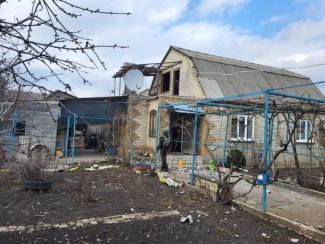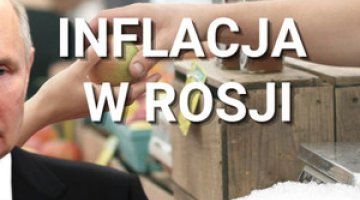Intensification of fighting for Avdiivka. Day 382 of the war

Russian forces continue to push back the defenders along the M03 highway towards Sloviansk. Fighting continues for control of the village of Orikhovo-Vasylivka, which lies to the south of it, blocking the road to the Donets-Donbas canal (the Russians crossed it south-west of Bakhmut in previous months). The Russians are believed to have unsuccessfully pushed against Ukrainian positions north-east of Chasiv Yar, but to have made slight advances south of it. In Bakhmut, Russian units approached the centre of the town, and from the north entered the AZOM metallurgical plant, which was one of the main centres of enemy defence. The Bakhmut section of the frontline accounted for about half of the total number of their attacks on Ukrainian positions (on 10 March there were 53 out of a total of at least 100, and a day later 39 out of 92).
Russia intensified its operations in the Avdiivka area and achieved success north of Avdiivka. Clashes continued for the village of Krasnohorivka north of that town, defending access to the railway line by which supplies arrive for its defenders. The Russians also pressed west of Avdiivka and on its southern outskirts. However, their subsequent attacks in an arc west of Donetsk and in the areas of Siversk, Kreminna and Kupiansk are thought to have ended without success. Ukrainian sabotage and reconnaissance groups are believed to have become active near Kreminna, as well as on the border of the Luhansk and Kharkiv oblasts and of the Donetsk and Zaporizhzhia oblasts.
Russian missile attacks hit the part of the Donetsk Oblast that remained under the control of the Ukrainians: in Sloviansk (missiles fell on the city twice, and railway infrastructure was hit, among others), and Kostiantynivka and Lyman were affected. The Zaporizhzhia rocket attack targeted a gas pipeline and an unspecified industrial facility. Russian artillery and aviation continue to fire and bombard along the contact line and in border areas. Russia maintains a high frequency of shelling Kherson and the surrounding villages (they are attacked dozens of times a day) and the coastal part of Mykolaiv Oblast (mainly Ochakiv). However, the intensity of attacks on the Nikopol Raion has decreased in recent days. The Ukrainians have shelled, among others, Mariupol and also Manhush, to the west of it. Acts of Ukrainian sabotage were also allegedly repeated in the Mariupol and Melitopol.
Norwegian Defence Minister Bjørn Arild Gram announced that Oslo would send Kyiv two NASAMS air defence systems (batteries) in cooperation with the US. The US has supplied two of them to the Ukrainian army, and Canada is funding the transfer of one more from the US. According to the acting head of the Danish defence ministry, Troels Lund Poulsen, the first Leopard 1 tanks may arrive in Ukraine in the spring and will be used for training.
The Stockholm International Peace Research Institute (SIPRI) presented information on the international arms trade. In 2022 According to this Ukraine rose to third place among the largest importers of arms (after Qatar and India). However, SIPRI experts pointed out that this is mainly the result of external military support and not Kyiv’s purchases. Ukraine also moved up to 14th place in the group of largest arms importers between 2018 and 2022, accounting for 2% of global imports during this period. By contrast, Russian arms exports fell in 2022 (from 22% to 16% of global exports). Nonetheless, Russia retained second position in this ranking, after the US (40% of global exports). However, the continuation of the trend of domestic arms purchases increasing, should put Russia at risk of falling further down the list in the coming years (in 2022, France was in third place with 11%).
On 10 March, President Volodymyr Zelensky – referring to the media uproar over the causes of the damage to the Nord Stream 2 pipeline – denied any Ukrainian involvement in the incident. In his view, this information is being spread to slow down aid to his country. He noted that he is now fighting not only against Russia, but also against people representing businesses suffering losses due to the decline in trade with the aggressor.
Ukrainian Foreign Minister Dmytro Kuleba stated on 12 March that he does not expect a rapid delivery of fighter aircraft to Ukraine, as this is a very difficult task from both a logistical and technical point of view. Kyiv is therefore already proposing to start training pilots in Western fighters. A day later, Ukrainian Air Force spokesman Yuriy Ihnat gave assurances that these would begin once the type of aircraft to be delivered had been determined, and would take place in countries that have them on board.
According to British intelligence, Yevgeny Prigozhin – owner of the private military company Wagner Group – will be forced to reduce the scale of its involvement on the frontline due to its limited capacity to recruit new ‘volunteers’. This is influenced by an informal ban on prisoner recruitment – the result of ongoing disputes with the defence ministry on how to use them. Prigozhin returned at the beginning of March to recruiting people whose main motivation is the prospect of receiving an attractive salary. To this end, 40 recruitment centres have been set up at sports centres in Russia.
Anti-regime Russian media outlets have communicated growing discontent among the relatives of those mobilised from the Moscow Oblast. Families have asked Vladimir Putin and Defence Minister Sergei Shoigu to withdraw the inadequately trained soldiers from the front line. Public complaints are also being made by the soldiers themselves, who are being diverted as infantry to the fiercely contested Donbas region, despite earlier promises that they would serve in the artillery.
Commentary
- Russia’s intensification of operations in the Avdiivka area in parallel with the continuation of the high intensity of fighting in the Bakhmut area indicates that it considers the current military situation favourable enough to afford to disperse its efforts. This is in spite of the progressive increase of the number of Ukrainian soldiers in the fighting areas (mainly around Bakhmut). The problems with their effective resistance are mainly due to equipment shortages, which Russia is eagerly exploiting. However, the defenders demonstrate a high level of determination. This is demonstrated not only by the fierceness of their resistance, but especially by the counter-attacks they launch almost immediately after losing their positions. These make it significantly more difficult for the enemy to quickly discount successes and take full control of the attacked localities.
- SIPRI’s information confirms the degree to which the Ukrainian army was underinvested in as regards equipment before 2022. Despite the positive changes it had undergone after the Russian aggression in Crimea and Donbas eight years earlier, new or modernised armaments and military equipment had been purchased sporadically and in small batches. Since the start of the current phase of the war, Ukrainians have received more armaments and military equipment than in the entire period since independence in 1991 (the total value of Kyiv’s partners’ extensive military aid is estimated at $65 billion). In contrast, the decline in the volume of Russian arms exports noted by SIPRI is, for the first time in nearly 30 years, due not to a competitive scramble for markets or to sanctions, but to the reorientation of the Russian defence-industrial complex towards the fulfilment of internal orders. The current rate of military equipment production is the highest in Russia since the 1980s. However, for reasons of an economic nature (higher manufacturing costs and a reduction in the production base) and also of a technological nature (an increase in the complexity of the production cycles of armaments and military equipment), it is unlikely to match the Soviet era in this respect.




